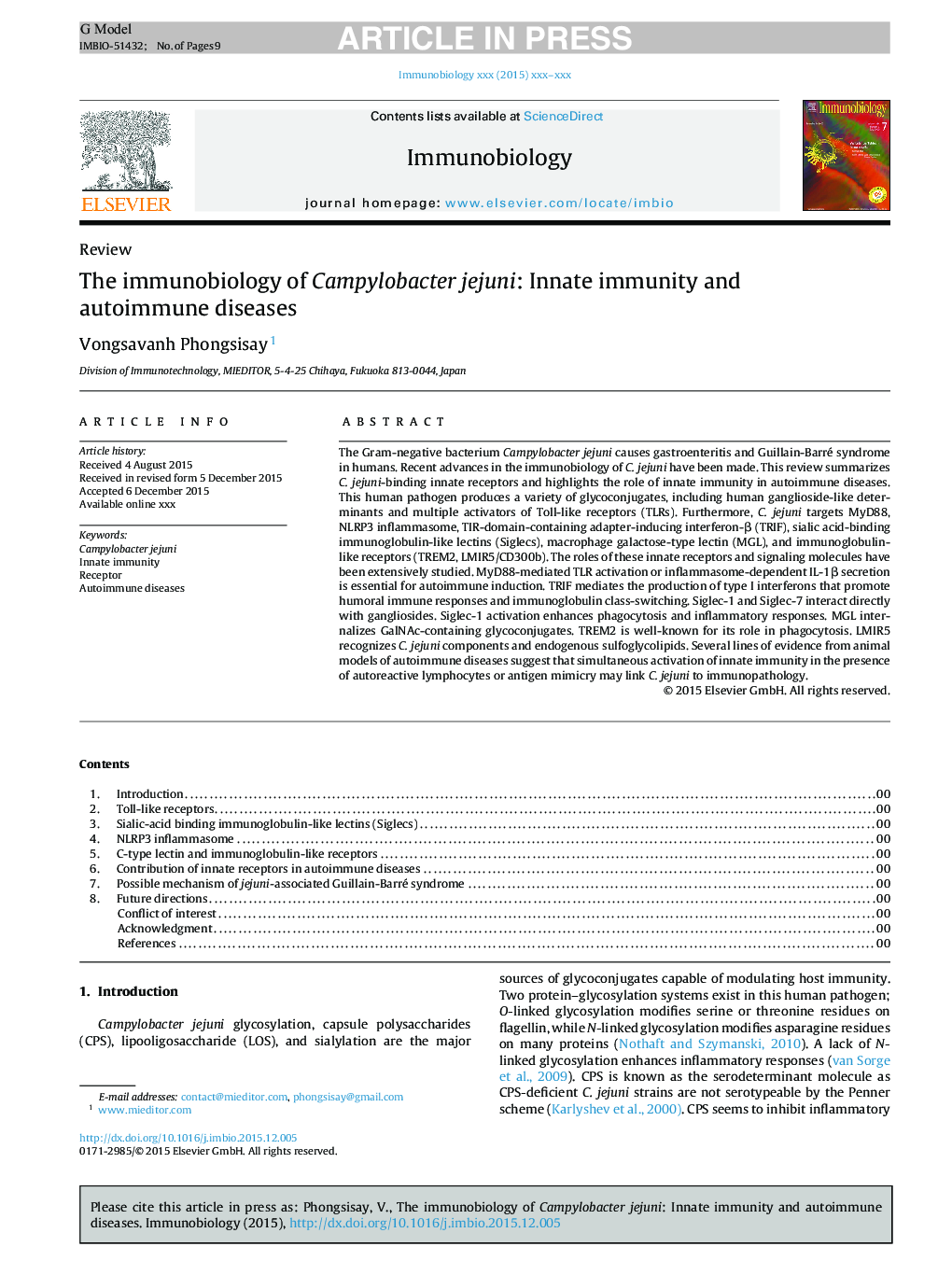| Article ID | Journal | Published Year | Pages | File Type |
|---|---|---|---|---|
| 10940771 | Immunobiology | 2016 | 9 Pages |
Abstract
The Gram-negative bacterium Campylobacter jejuni causes gastroenteritis and Guillain-Barré syndrome in humans. Recent advances in the immunobiology of C. jejuni have been made. This review summarizes C. jejuni-binding innate receptors and highlights the role of innate immunity in autoimmune diseases. This human pathogen produces a variety of glycoconjugates, including human ganglioside-like determinants and multiple activators of Toll-like receptors (TLRs). Furthermore, C. jejuni targets MyD88, NLRP3 inflammasome, TIR-domain-containing adapter-inducing interferon-β (TRIF), sialic acid-binding immunoglobulin-like lectins (Siglecs), macrophage galactose-type lectin (MGL), and immunoglobulin-like receptors (TREM2, LMIR5/CD300b). The roles of these innate receptors and signaling molecules have been extensively studied. MyD88-mediated TLR activation or inflammasome-dependent IL-1β secretion is essential for autoimmune induction. TRIF mediates the production of type I interferons that promote humoral immune responses and immunoglobulin class-switching. Siglec-1 and Siglec-7 interact directly with gangliosides. Siglec-1 activation enhances phagocytosis and inflammatory responses. MGL internalizes GalNAc-containing glycoconjugates. TREM2 is well-known for its role in phagocytosis. LMIR5 recognizes C. jejuni components and endogenous sulfoglycolipids. Several lines of evidence from animal models of autoimmune diseases suggest that simultaneous activation of innate immunity in the presence of autoreactive lymphocytes or antigen mimicry may link C. jejuni to immunopathology.
Related Topics
Life Sciences
Biochemistry, Genetics and Molecular Biology
Cell Biology
Authors
Vongsavanh Phongsisay,
